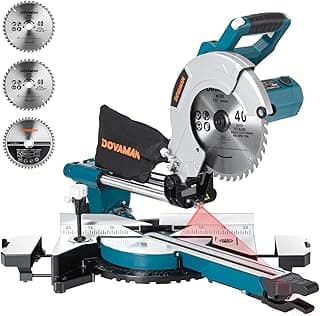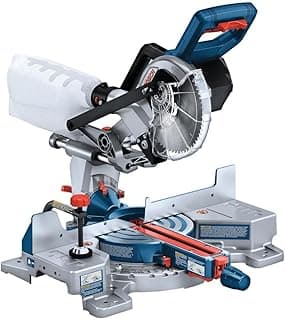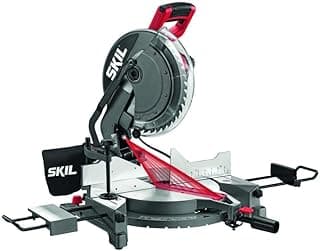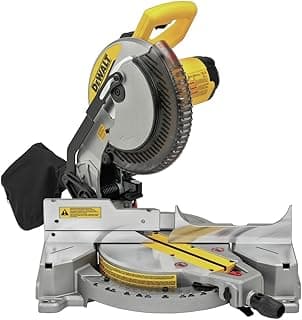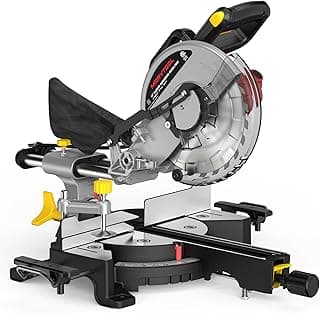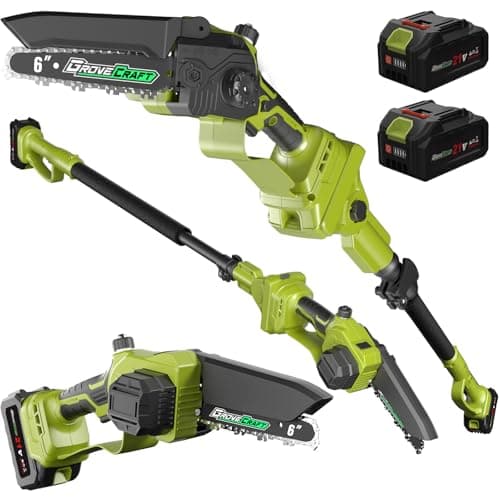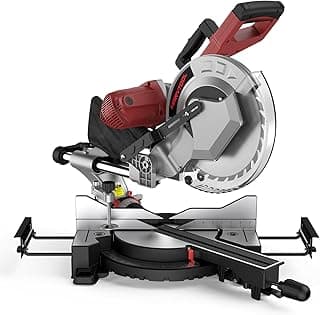Cutting plywood cleanly requires more than just raw power—it demands precision, the right blade, and a saw that feels comfortable during extended use. Whether you are a weekend DIYer or a professional woodworker, choosing the best circular saw for plywood can save you time and reduce frustration. Some users may prefer lightweight options, like the best circular saw for women, while others may need a model capable of handling tougher materials, such as the best circular saw for metal. And of course, understanding the core features that make any best circular saw stand out ensures you get smooth, accurate cuts every time. Stick with me, and I’ll break down what you need to know before making a purchase.
Top Picks
Best Lightweight: DEWALT Circular Saw, 7-1/4 inch, Pivoting with up to 57 Degree Bevel, Corded
The DEWALT 7 1/4-inch circular saw stands out for its lightweight design at just 8.8 pounds, making it easier to handle for extended periods compared to other saws in its class. Its 15-amp motor delivers consistent power, capable of tackling dense wood and demanding cuts without bogging down. The saw features a 57-degree beveling capacity, with convenient stops at 45 and 22.5 degrees, allowing flexibility for angled cuts. A depth of cut up to 2 9/16 inches ensures it can handle thicker stock. The durable aluminum base provides stability and precision, while the ball-bearing lower guard adds longevity even in rugged jobsite conditions. Additionally, the electric brake enhances safety by quickly stopping the blade once the trigger is released.
From a user perspective, many appreciate its combination of power and portability, noting that it reduces fatigue during long cutting sessions. Some mention that being corded limits mobility compared to cordless options, and the depth adjustment, while adequate for most tasks, can feel slightly restrictive for very thick materials. Overall, it is praised for reliability, smooth operation, and the balance of performance and ease of handling for home and professional woodworking tasks.
Best Portable: DEWALT 20V MAX* 6-1/2 in. Brushless Cordless Circular Saw, Tool Only
The DEWALT cordless circular saw is designed for versatility and precision, especially suited for metal cutting tasks. Its bright LED light improves visibility on cutting lines, enhancing accuracy even in dimly lit workspaces. The tool-free bevel lever allows quick adjustment from 0 to 50 degrees, providing flexibility for angled cuts without the need for additional tools. Its compact and lightweight design ensures high maneuverability, reducing fatigue during prolonged use. Safety is enhanced with an electric brake that stops the blade immediately when the trigger is released. The brushless motor delivers efficient power for clean and consistent cuts across various materials, while compatibility with DEWALT 20V MAX and FLEXVOLT batteries ensures flexibility on job sites. Added features like the built-in rafter hook support convenient storage.
From a user standpoint, many appreciate the portability and precision it offers, especially when working on elevated or confined areas. Some note that relying on battery power may limit continuous work compared to corded models, and the dust management system requires the optional chute for optimal performance. Overall, it is highly regarded for its balance of safety, power, and maneuverability.
Best Efficient: Makita XSH03Z 18V LXT® Lithium-Ion Brushless Cordless 6-1/2" Circular Saw
The Makita cordless circular saw is engineered for efficiency and precision in wood cutting. Its Makita-built electronically controlled BL Brushless Motor delivers up to 5,000 RPM, enabling faster cutting and ripping with minimal effort. Automatic Speed Change technology adjusts torque and speed on the fly, ensuring optimal performance across varying cutting demands. The brushless motor design eliminates carbon brushes, running cooler and more efficiently, which prolongs the life of both the motor and the battery. Users benefit from up to 50% longer runtime per charge due to the motor’s intelligent energy management.
From the perspective of customers, the saw is praised for its consistent cutting speed, smooth operation, and energy efficiency, making it ideal for extended projects without frequent battery swaps. Some note that, as with most cordless tools, the need to recharge limits continuous heavy-duty use, and specific depth adjustment capabilities are not highlighted, which may be relevant for certain applications. Overall, it is highly regarded for combining power, efficiency, and durability in a compact, portable package.
FAQs
What type of circular saw blade is best for plywood?
The ideal blade for plywood is one that balances sharpness with precision. Look for blades with high tooth counts, typically 60 to 80 teeth for a 7-1/4 inch blade, as they produce smoother edges and reduce splintering. A thin-kerf blade is also recommended because it removes less material, reducing tear-out and making cuts more controlled. Carbide-tipped teeth are standard for durability, staying sharp longer when cutting through multiple sheets. Finally, a blade designed specifically for plywood or fine woodworking usually features alternate top bevel (ATB) teeth, which slice through the surface cleanly.
What saw is best for cutting plywood?
While many circular saws can cut plywood, the best options are those that provide adjustable depth settings, smooth motor control, and a stable base. Corded saws often deliver consistent power for larger sheets, while high-quality cordless models offer portability without sacrificing cutting quality. Look for saws with laser guides or edge guides to maintain straight cuts across full sheets. Additionally, a lightweight saw reduces fatigue during long cutting sessions, which is particularly helpful when maneuvering large plywood sheets.
Can you cut plywood with a circular saw?
Absolutely. Circular saws are one of the most versatile tools for cutting plywood. The key is preparation: support the sheet properly to prevent sagging, mark your cut line clearly, and use a sharp, appropriate blade. Start the saw slowly and allow it to reach full speed before cutting. Cutting along the top side of the plywood minimizes splintering, though using painter’s tape along the cut line can also help protect the finish. With the right setup, circular saws can achieve straight, clean cuts that rival more specialized table saws.
What should a circular saw blade designed for cutting plywood have?
A blade tailored for plywood should include several features:
-
High tooth count: Ensures smooth edges without splintering.
-
Thin kerf: Reduces material waste and minimizes tear-out.
-
Carbide-tipped teeth: Provides long-lasting sharpness and durability.
-
Alternate Top Bevel (ATB) design: Creates clean cuts across veneers.
-
Laser cut stabilizer vents (optional): Reduce vibration and noise, keeping the cut precise.
These features together make cutting plywood safer, more accurate, and less frustrating. Choosing a blade without these considerations often leads to rough edges, increased sanding work, and wasted material.
Final Thoughts
Finding the best circular saw for plywood isn’t just about picking a powerful motor—it’s about choosing a tool and blade combination that delivers precision, clean edges, and reliable performance. By focusing on a high-quality blade with a fine tooth count, carbide tips, and ATB design, along with a saw that provides stability and comfort, you can handle any plywood project with confidence. Whether you are a hobbyist or a professional, investing in the right circular saw ensures smooth, efficient, and accurate cuts every time.














